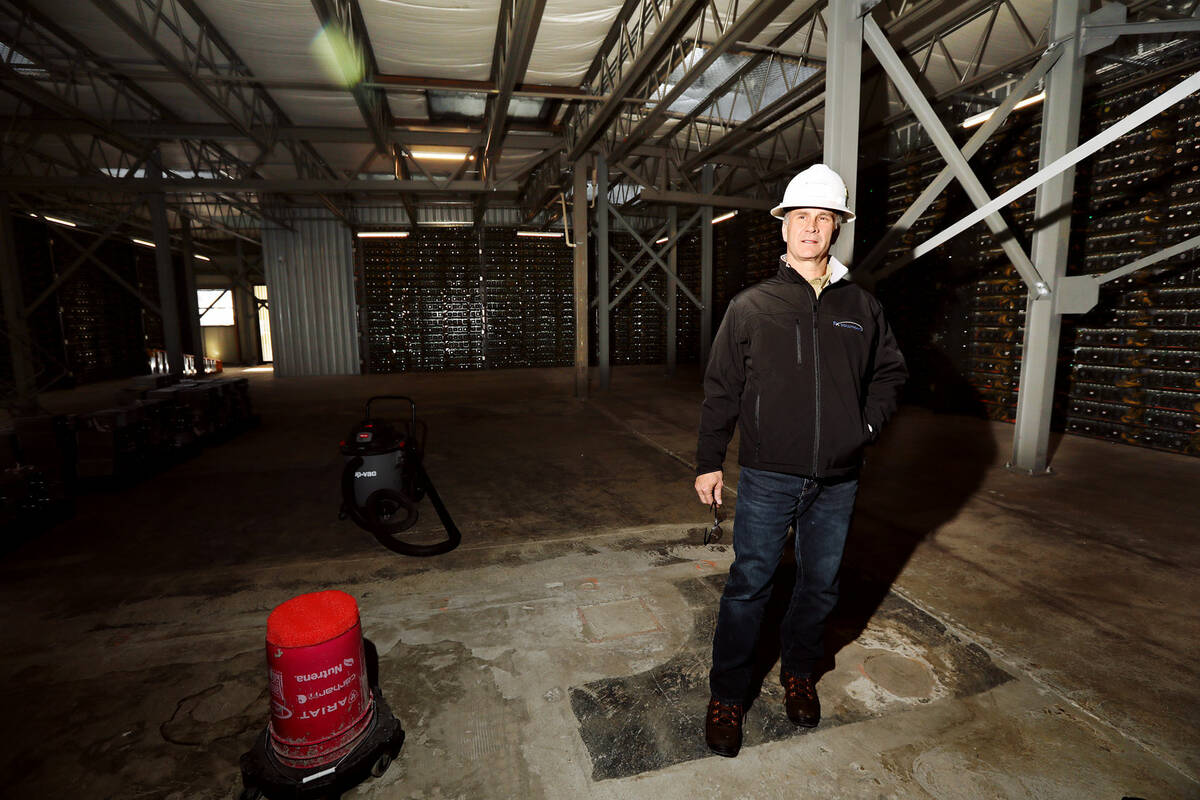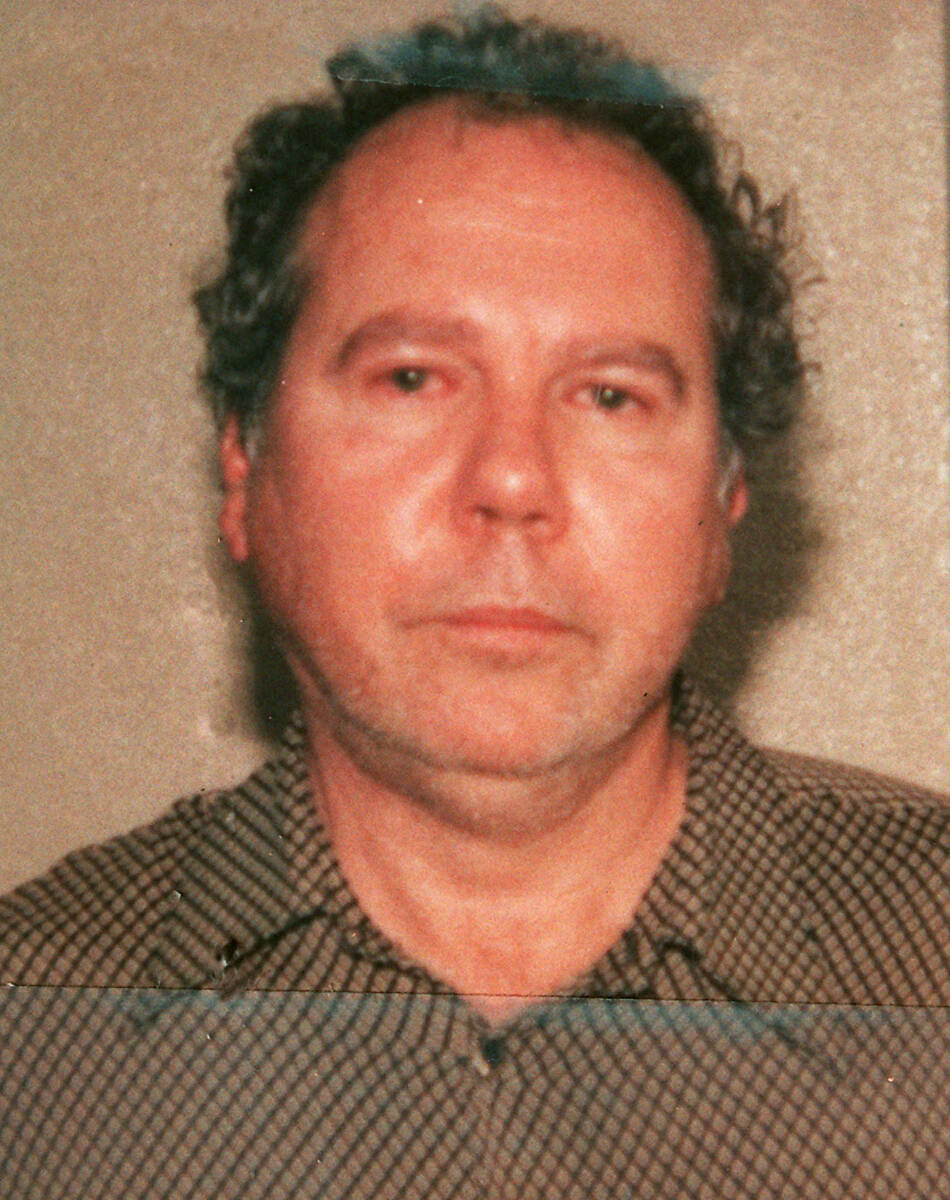From prison to a $1.9B crypto deal, Rick Tabish has moved on
Rick Tabish says he has moved on from the darkest chapter in his life.
Following his 2010 release from a Nevada prison on criminal convictions stemming from the mysterious death of casino heir Ted Binion, the 56-year-old Montana man has spent a decade remaking his past into a career as a business executive.
Tabish has carved a niche in the cryptocurrency mining industry and is overseeing construction of a $1.9 billion data center in North Dakota, garnering public support from the governor he calls “an unbelievable visionary.”
Gov. Doug Burgum has returned the praise, telling reporters that Tabish has “built an incredible reputation” over the past 10 years in the North Dakota business community. Tabish is president of Montana-based FX Solutions.
“I don’t want my name tarnished anymore,” Tabish told the Review-Journal this week. “I just want to be looked at like a good person who does good things. I hold no grudges. I’ve moved way beyond that.”
But no matter what he does, Tabish, who comes from a prominent Missoula, Montana, family, will be remembered for his entanglement in the Binion criminal case, one of the biggest in Las Vegas history.
It was case that had it all — sex, drugs, love, betrayal and buried treasure — in the backdrop of the entertainment capital of the world. Binion’s organized crime connections also surfaced during a time of intense national media interest.
Tabish and Binion’s girlfriend, Sandy Murphy, who had become secret lovers, were both convicted in 2000 of murdering the 55-year-old son of gambling legend Benny Binion, but later acquitted in 2004 at a second trial ordered by the Nevada Supreme Court. Binion was found dead at his home on Sept. 17, 1998.
The second jury found the pair guilty again in the Sept. 19, 1998, theft of $6 million in silver bars and coins that Binion had buried in an underground vault just off the main thoroughfare in Pahrump. Tabish spent 10 years in prison in Nevada before being paroled in 2010. Murphy, who danced briefly at a local topless club, was given credit for more than three years of time served behind bars during the two trials and moved back to Southern California and later got married.
Much of Tabish’s prison time stemmed from a July 1998 assault and extortion of one of his business partners in a Sandy Valley gravel pit. The charges were filed with the murder indictment, and Tabish’s conviction on those charges in 2000 was upheld by the high court.
Mike Nowatzki, a spokesman for Burgum, said in a statement that the governor was aware of Tabish’s criminal history, including his 2010 parole in the Binion case.
“He has done business in North Dakota for over a decade, to our knowledge without incident, including with a number of companies in the oil and gas sector,” Nowatzki said.
Tabish said he considers himself a hard worker and a family man now with a new wife and two young children.
“Right now, all I do is work and take care of my children,” he said. “Leaving a legacy for my kids is the most important thing in my life now. Everything I do is good stuff. I hang around quality people, no drugs, no idiots.”
To some degree, Tabish has indeed moved on.
Back in business
He appeared at a news conference Jan. 26 with Burgum, a former Microsoft executive, announcing the massive data center construction project near the city of Williston that the governor said will be one of the largest in the world.
The center is being built by Tabish’s FX Solutions and will be run by another Montana business, Atlas Power. The owner of that company, Kevin Washington, is a wealthy Missoula businessman and longtime friend of Tabish.
“This major investment in North Dakota will further cement our state’s growing reputation as a hub for data centers and cryptocurrency mining, thanks to our incredibly reliable, affordable and redundant power supply and a climate that lowers cooling costs for data center operations,” Burgum said in a news release.
Crypto mining is the process of creating new units of digital currency, such as Bitcoin and Ethereum.
The first phase of the high-tech Williston project will consist of 16 buildings, each 350 feet long by 30 feet wide that will house tens of thousands of servers to conduct high-performance computing using 240 megawatts of electricity, according to the governor. The project is being built on 77 acres and eventually will be expanded to have the capability of using 700 megawatts.
“North Dakota is going to be a true leader worldwide in this industry,” Tabish was quoted as saying in the governor’s news release. “Our ability to energize and build this project is creating a speed to market never seen before in this space.”
The ambitious project rollout resurfaced news of Tabish’s past.
Despite being almost more than a quarter-century old, Binion’s mysterious death is still attracting the attention of the national media. NBC’s “Dateline” revisited the criminal case last month and at least one other national cable network is planning another look at what some called the “trial of the century.”
Mum on Binion
Tabish this week was reluctant to talk about the Binion case. But he was quick to heap praise upon Burgum.
“He’s a high-tech guy, a really fantastic individual. He’s really excited about what we’re doing and that’s why he has supported us in the way that he has,” Tabish said.
Former Clark County District Attorney David Roger, who obtained the murder convictions of Tabish and Murphy in the first trial in 2000, said he wasn’t surprised that Tabish has gotten into crypto mining.
“Rick Tabish was always ambitious,” Roger said. “He’s a guy who is a smooth talker, very outgoing and charismatic.”
Roger was elected district attorney in 2002, partly because of the fame he received prosecuting the sensational case.
Binion had lost his state gaming license prior to his 1998 death. He was a known heroin user who had landed in trouble with gaming regulators because of his association with reputed mobster Herbie Blitzstein, the top lieutenant to Anthony Spilotro, the Chicago mob’s overseer in Las Vegas.
Blitzstein was killed a year before Binion in a bid by the Buffalo and Los Angeles Mafia families to take over street rackets in Las Vegas, a decade after Spilotro was murdered gangland style in the Chicago area.
At the age of 33, Tabish had brought his then-Montana transportation company to town looking for new business opportunities. One night in 1998, he befriended Binion in the bathroom at Piero’s, the upscale local hangout for the rich and famous. Soon, he met the 26-year-old Murphy and eventually had an affair with her.
Police originally thought Binion’s death was the result of a drug overdose, but evidence compiled with the help of a private investigator hired by Binion’s estate led detectives to conclude that Binion was murdered. Tabish was arrested about 36 hours after Binion’s death after he had dug up the casino boss’ silver in Pahrump during the middle of the night.
It was a circumstantial case with no smoking gun. Prosecutors alleged that Murphy and Tabish forced Binion to swallow lethal levels of heroin and the antidepressant Xanax before suffocating him.
Four years later at the second trial, with a different prosecution team, defense lawyers were able to cast doubt on the state’s theory, and Tabish and Murphy were found not guilty on the murder charge.
Tabish said he hasn’t been in contact with Murphy since their acquittals, but he still comes back to Las Vegas occasionally for business meetings. He always tries to schedule dinner at Piero’s for its signature dish, osso buco.
Tabish believes he wasn’t treated fairly by prosecutors here, but he harbors no ill feelings.
“I would sit down and have a drink with David Roger, if I saw him tomorrow,” he said.
Contact Jeff German at jgerman@reviewjournal.com or 702-380-4564. Follow @JGermanRJ on Twitter. German is a member of the Review-Journal’s investigative team, focusing on reporting that holds leaders and agencies accountable and exposes wrongdoing.






























